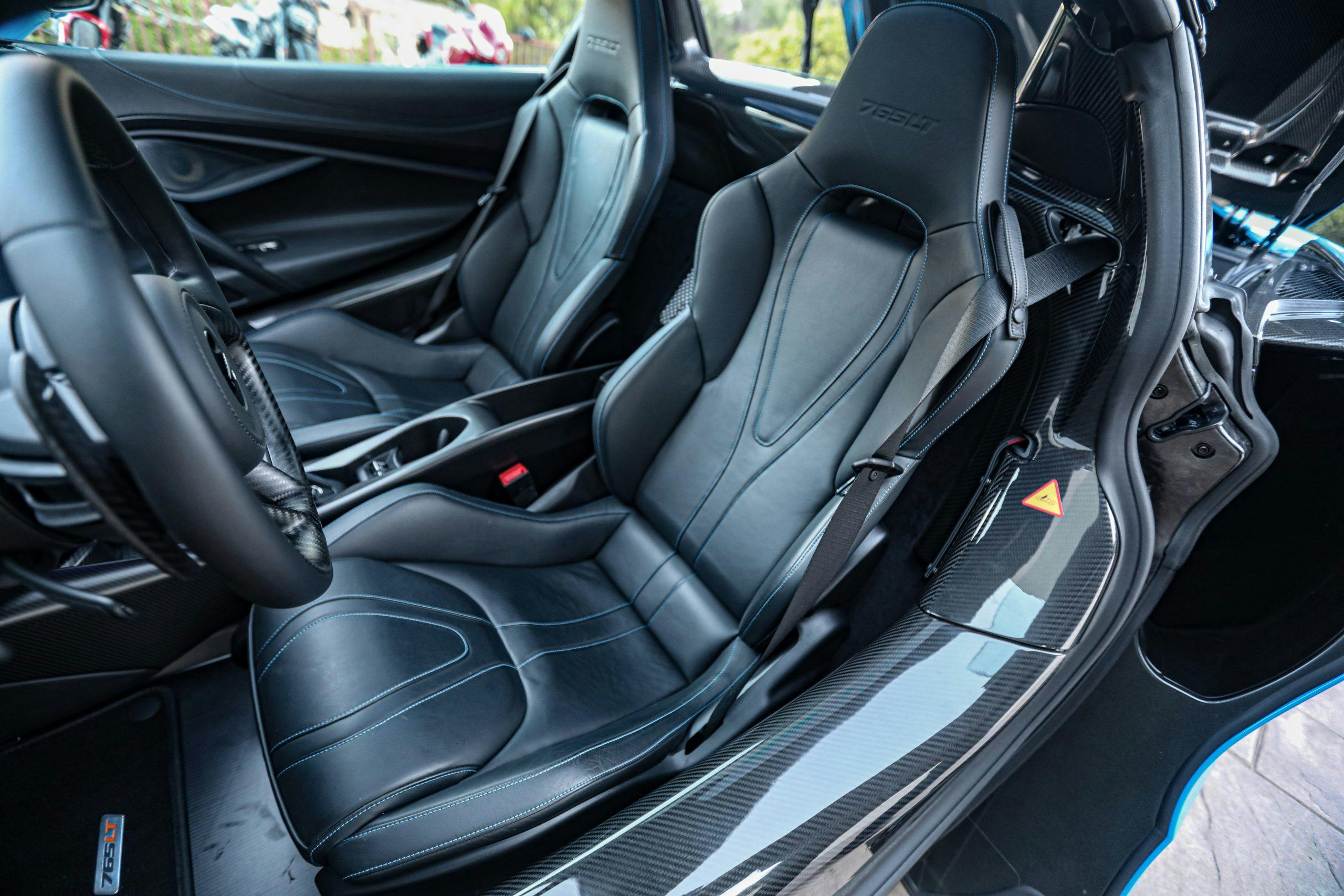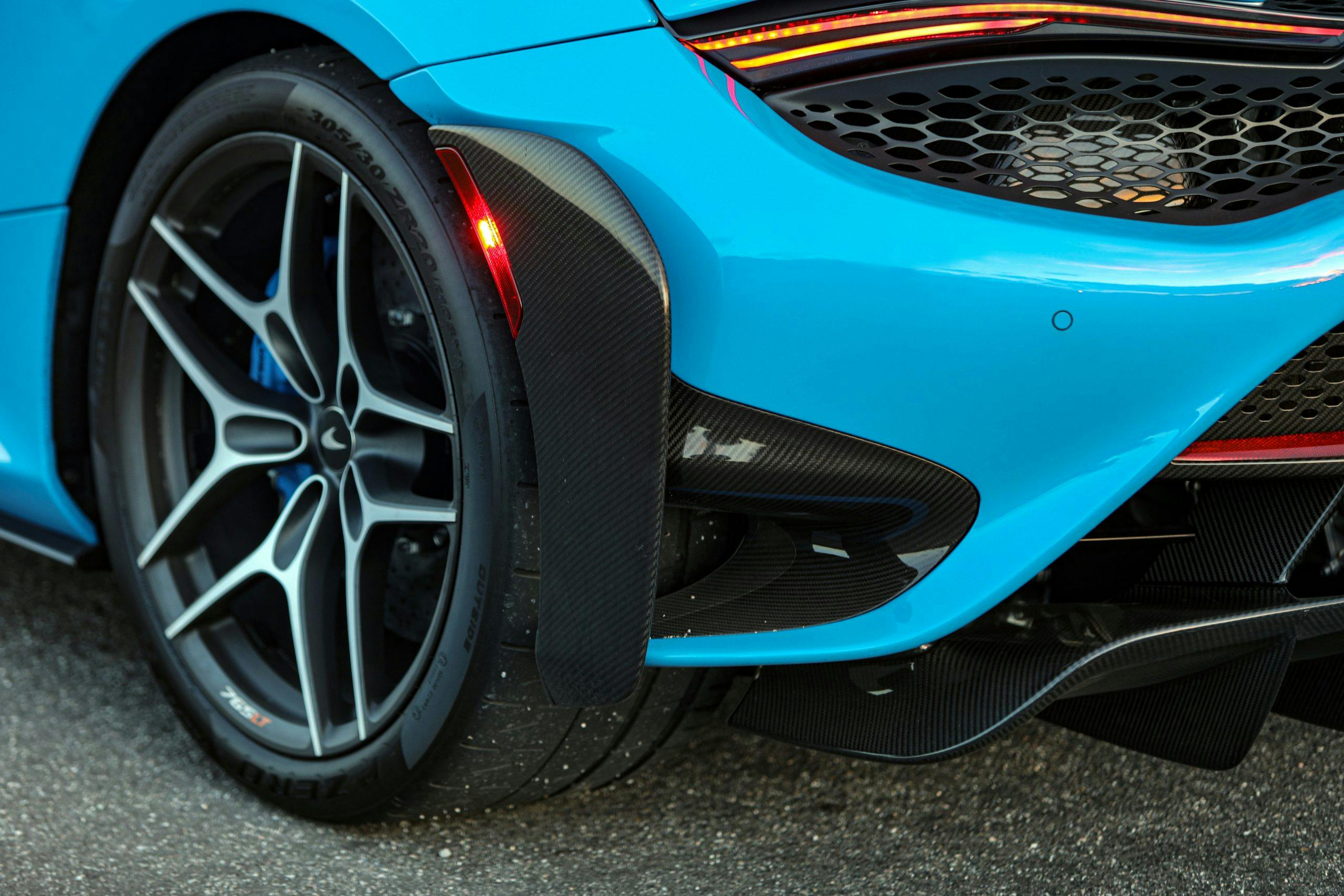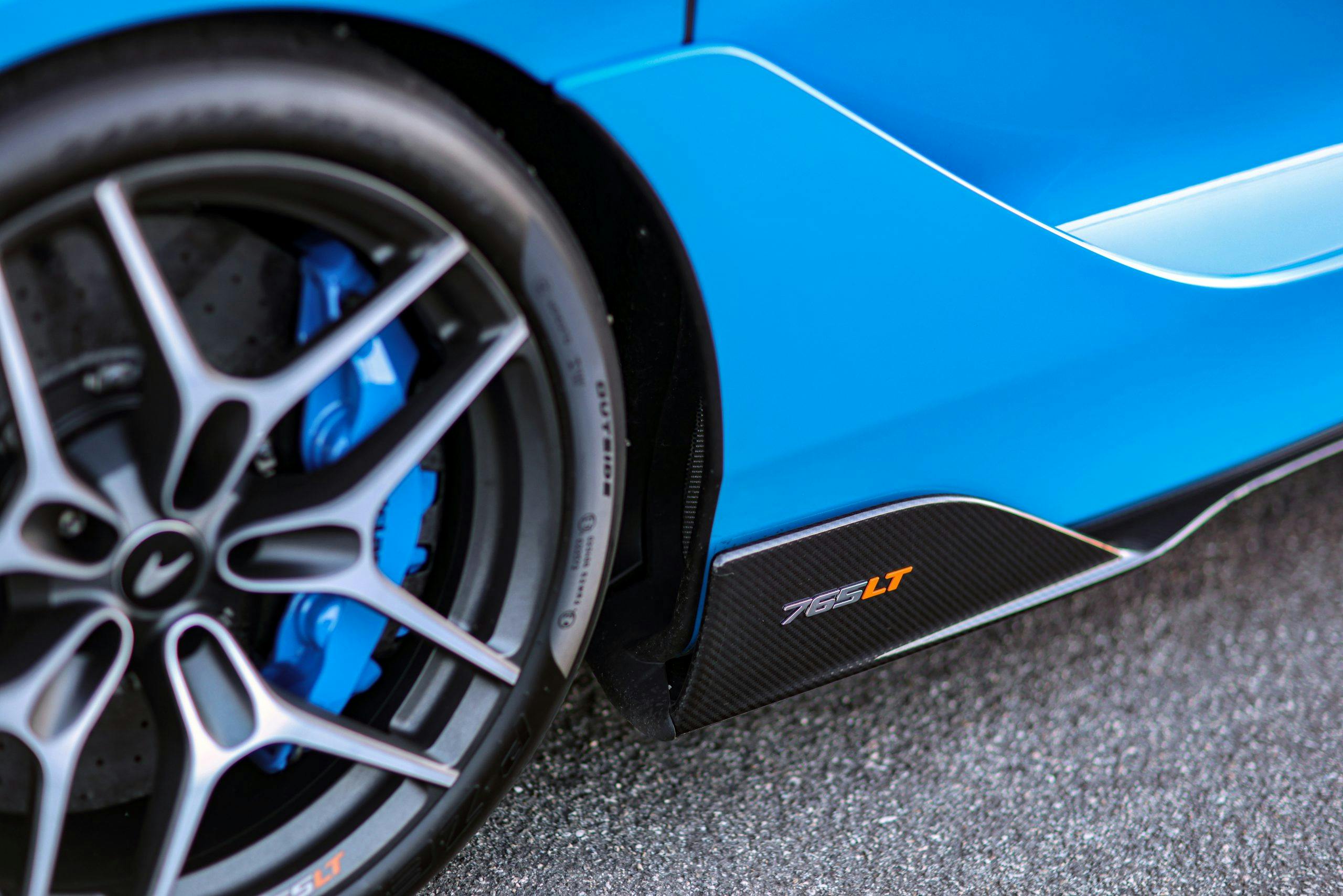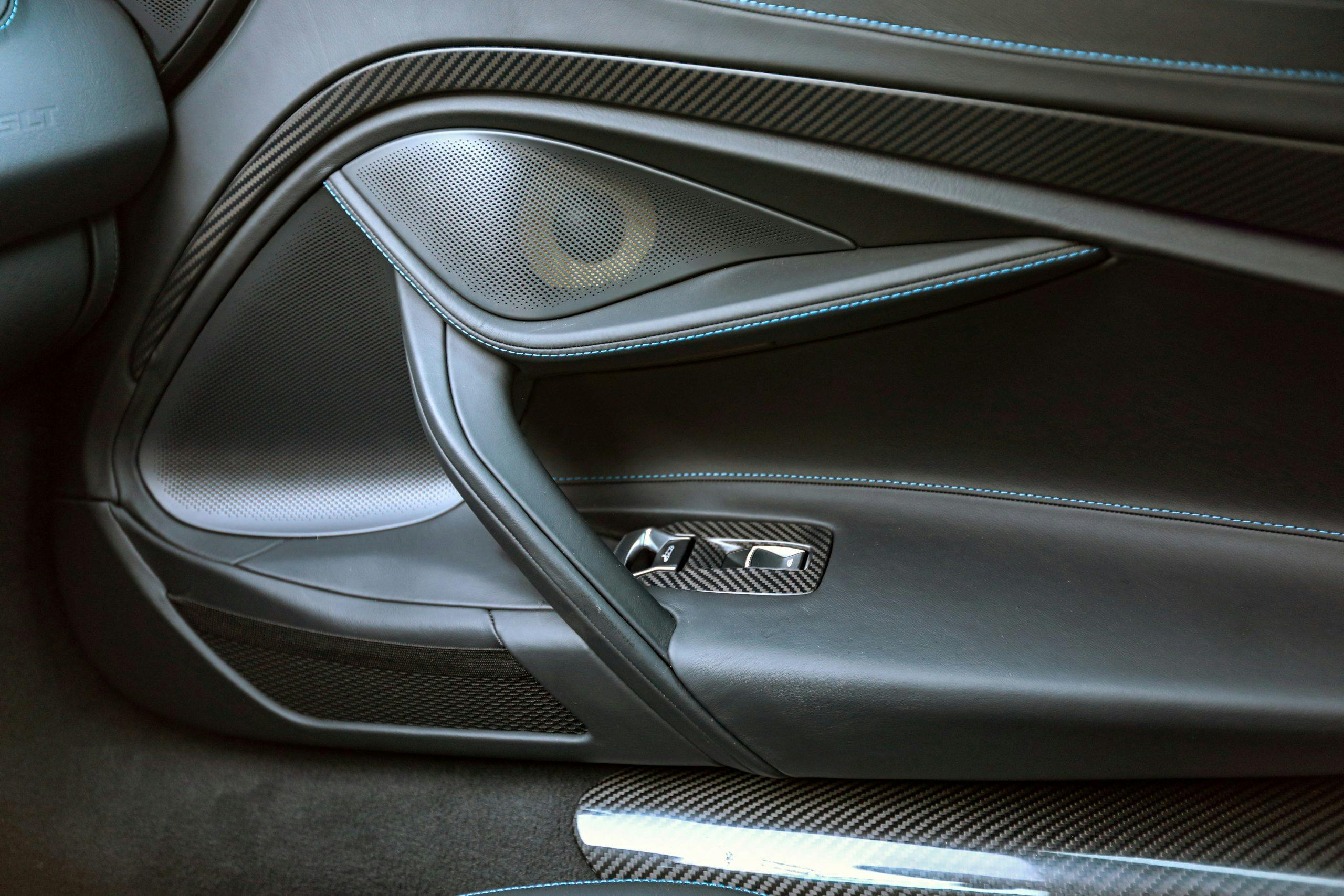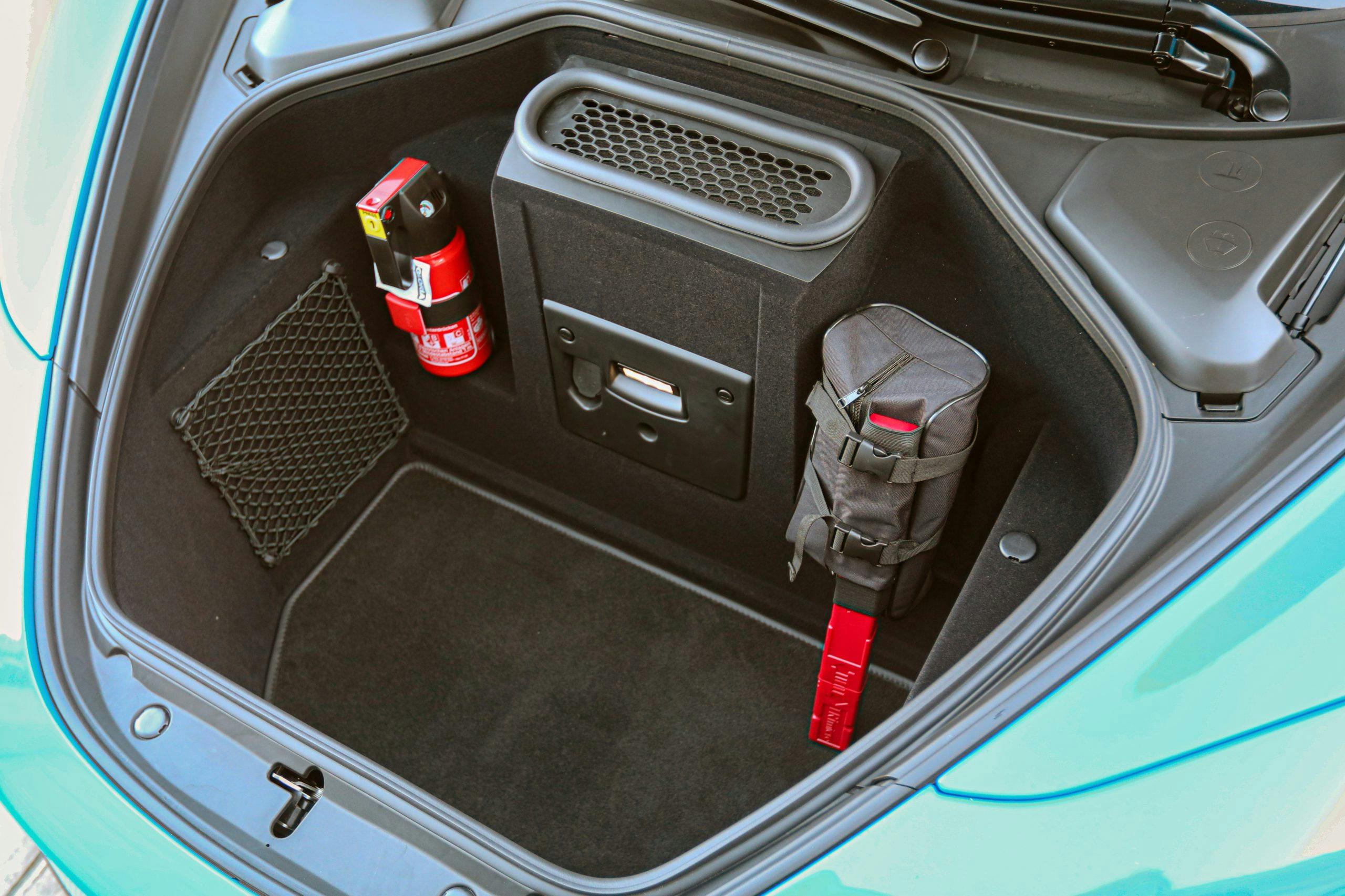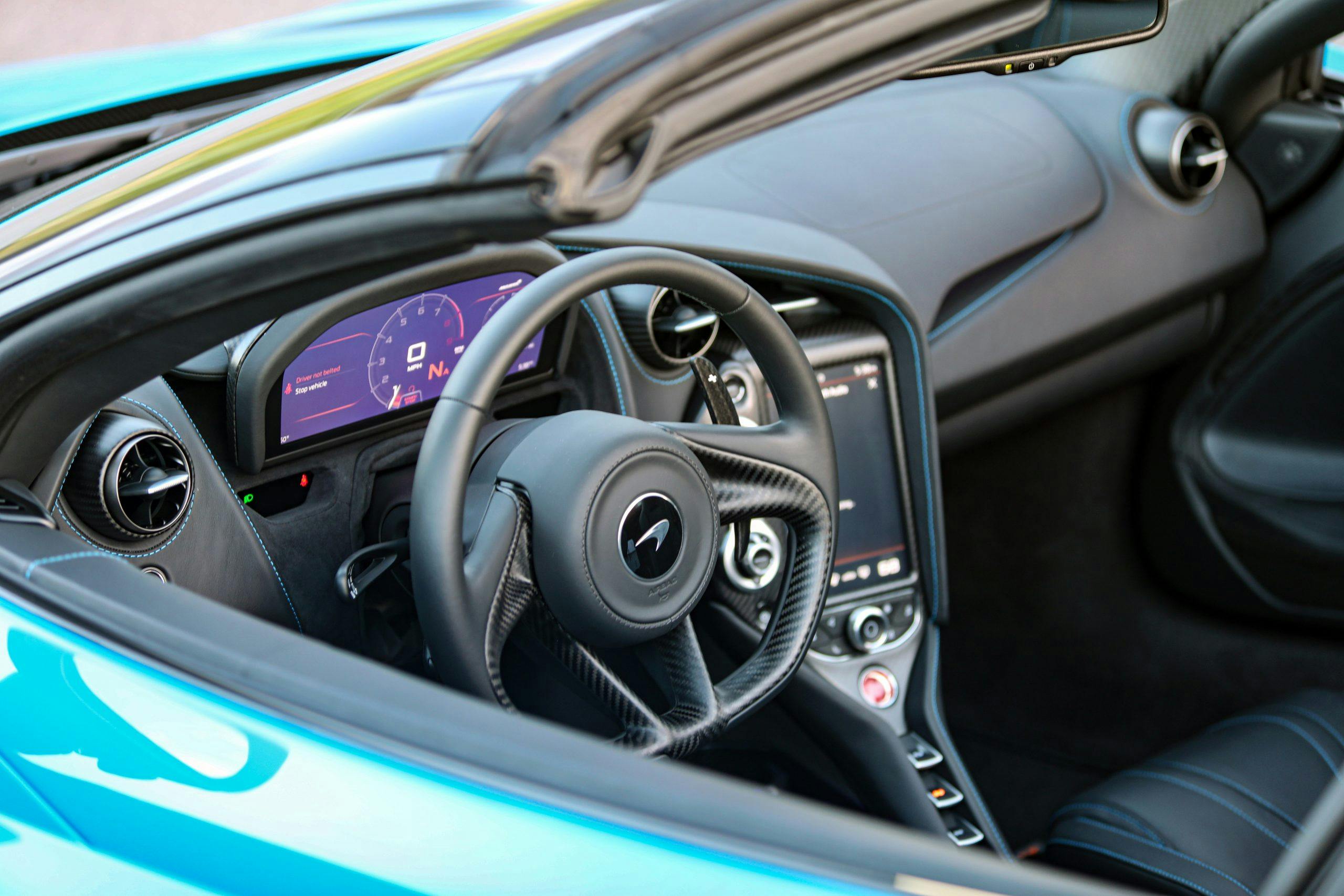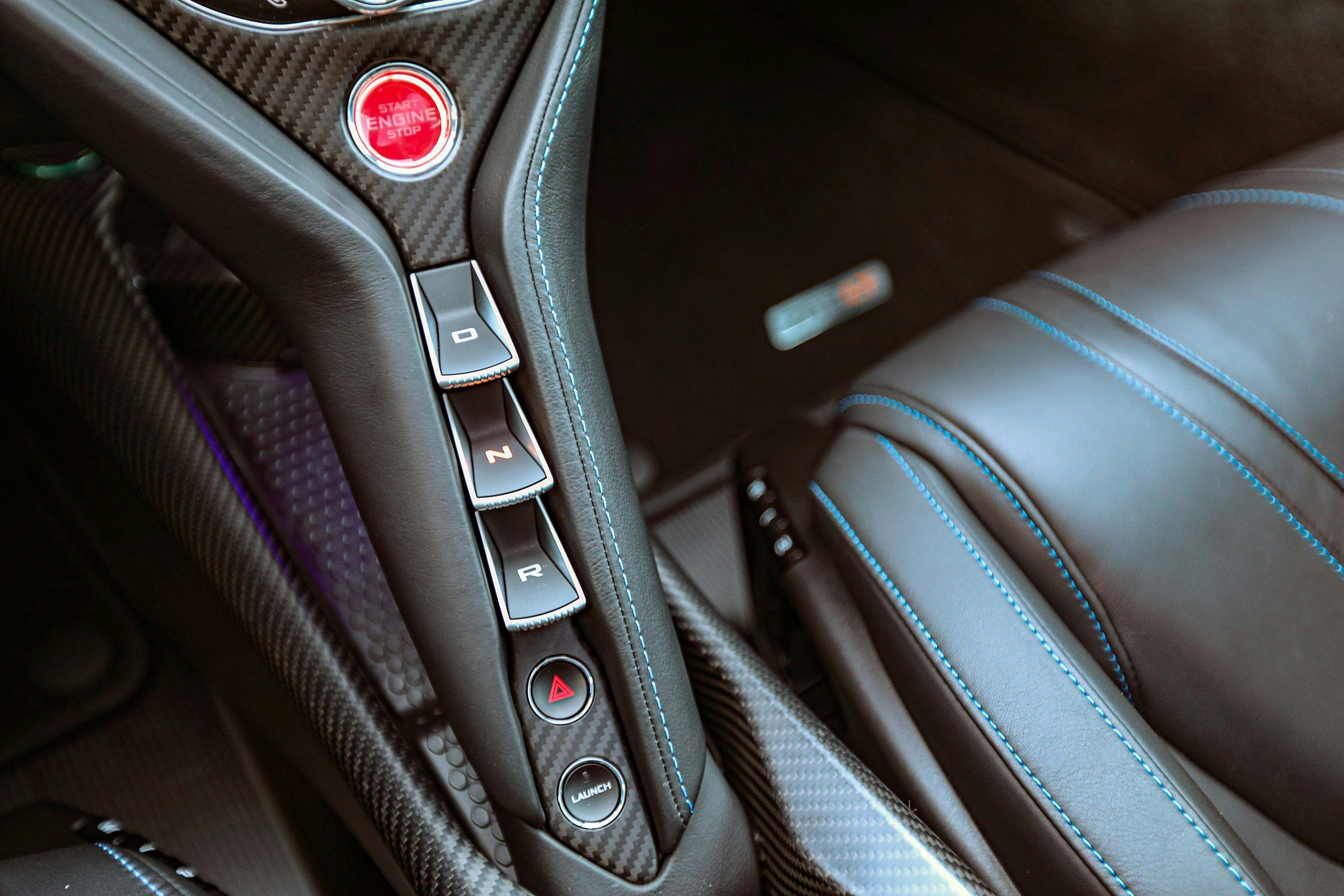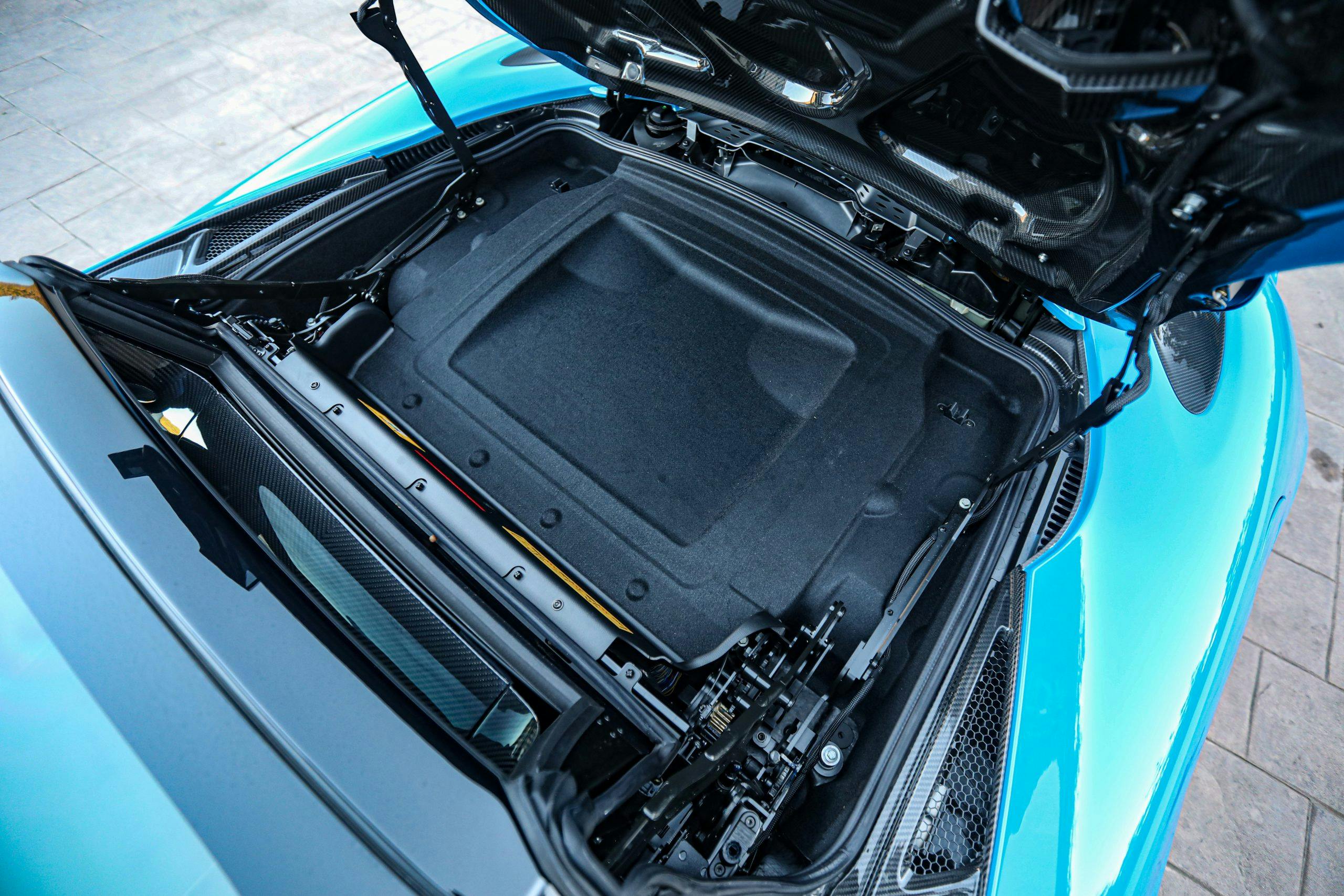Review: 2022 McLaren 765LT Spider
Now it can be told, as it was told me to a while ago: if you go to a ColdStone ice-cream restaurant, you really only have two choices available for non-yogurt varieties. The first one is chocolate. The second one is… everything else. It’s a tasteless (in the basic sense of the word, not in the “putting a ‘Carrera’ logo on the side of your 993” sense) base material to which a wide variety of flavoring agents are added. So Mint, Strawberry, and Cookie Dough all start off the same way.

Crazy, huh? Well, McLaren applies that same basic idea to its complete lineup of vehicles from 2011 to the present day. They’re all based on the MonoCell idea, although not all MonoCells are exactly the same. Then they are “flavored” into all the different models from the original 12C and P1 to the current Senna/Sabre, using different parts.

One consequence of this philosophy is that all McLarens are genuinely capable sporting vehicles, from the lovely GT touring car to the 765LT Spider you see before you. That’s the good news. The bad news is that only the most clued-in of cognoscenti understand why some of the company’s offerings cost under two hundred grand while others will ring the register for north of a million. Everyone else will just see that you have some kind of McLaren, except for the people who will see the “dihedral” doors and think it’s a Lamborghini.
At a base price of nearly $400k and an as-tested of $532,600, this 765LT Spider is an exceptionally special, and fearfully capable, vehicle. But you’re going to have to explain it to most of the people you meet. Allow me to help a bit.
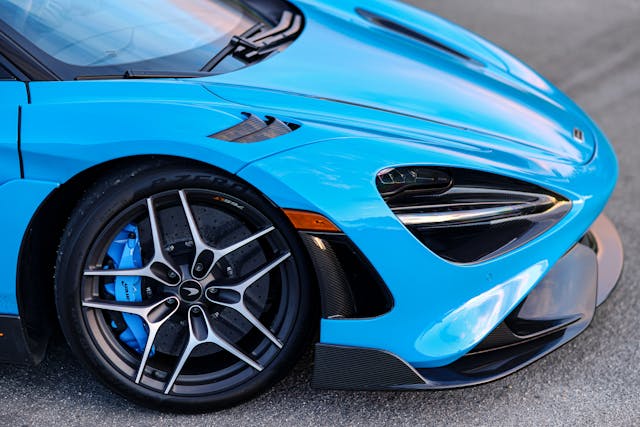
To make a 765LT Spider, you start with a MonoCell convertible platform, add a 755-horsepower version of McLaren’s omnipresent four-liter, twin-turbo V-8, fill in the trick hydraulic suspension found on the higher-end Super Series cars, then cloak it in the most deranged and aggressive-looking bodywork the firm offers short of the unlovely Senna. This thing has vents and spoilers and flares everywhere you look. I don’t think it shares anything but the doors with its less aggressive 720S sibling. Every aspect of the car from the trunklid to the extra-cost wheels is weight-optimized and aero-adjusted. McLaren claims a curb weight just over three thousand pounds, considerably less than that of the 720S.

McLaren has used this formula before, most notably with the sublime 675LT. Like that last car to bear a “longtail” nameplate, the 765LT is a curious mixture of uncompromising and cosseting. From the moment you fire it up, you’ll be surrounded by noise. The various transmission and suspension “clunks” that are filtered by insulation in the 720S are unfettered here, so the car occasionally sounds like it is in the middle of breaking down. That’s okay. Over time you’ll learn to trust it, and the 675LT was actually quite a bit worse in this regard.
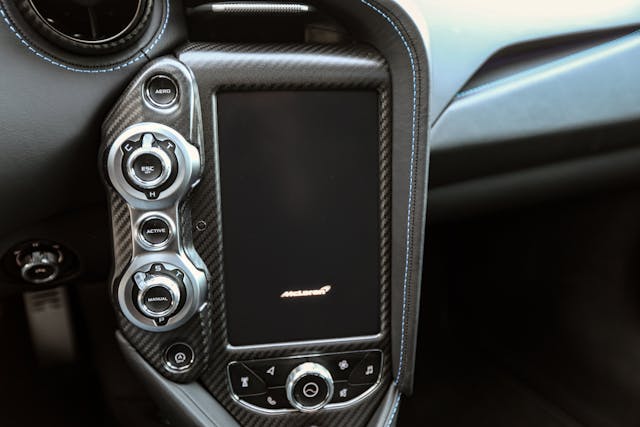
Another improvement over the previous longtail: the infotainment system is much improved, and most of the controls are placed in slightly more sensible locations. This is still a vehicle that demands some perusal of the owner’s manual before you drive it, not least because some of the controls (like the mirror adjustment) aren’t in the driver’s field of view. The 675LT was notorious for blank infotainment screens and frequent “reboots” of the system; those annoyances are yesterday’s news, replaced by a new and larger screen with excellent visibility even in sunlight.
As was the case with the 675LT Spider, the weight penalty of the folding top is minimal, being quoted at 108 pounds in this model. An extra nine grand gets you a nice electro-dimming glass roof as well. The really hardcore McLaren “anoraks” like to talk about how the suspension in the Spider is softened a bit and the center of gravity is moved forward a bit compared to the hardtop coupe, leading to… blah blah blah. You’d need a whole day of back-to-back track time to tell any real difference.
This is what you’ll notice, particularly in the California canyons where I put two hundred highly intense miles on our test Spider: not since Churchill put teenagers in wooden-bodied Mosquitos and told them to use their wings to “flip” V-1 buzz bombs in flight have the British given something quite this weapons-grade to such an unqualified group of operators. I can tell you how fast the LT is in committed operation, but it will come off as an odd mixture of bragging and cowardice.

Let’s try regardless: The 765LT turns canyon roads into autocrosses. The literbike-level acceleration of the thing puts you into triple digits between canyon corners that are just a few hundred yards apart. It’s so fast that it has to be driven with two feet, like a Radical or a shifter kart, because the extra time you need to move your right foot over to the brake will see you sailing into the Pacific Ocean. I found myself working both pedals at once continually, like Hiromi Uehara in the middle of a particularly energetic solo.
Full throttle to about 150 feet out… full brake… trail the brake off and raise the boost with your right foot against the brake… left foot up, right foot roll on… okay, the back end is oscillating wildly and the rear wheels are spinning, that’s too much… mid-throttle for a count of one-one-thousand then back on it… oh shucks, it’s already time to brake…

I’ve driven McLaren race cars in both GT3 and GT4 spec on-track. They are docile, friendly creatures, with restrictor-plate power and big front tires to keep things balanced. The 765LT is no such thing. It’s a panic attack on wheels. In the same kind of situation, the faster and more expensive Senna is actually easier to drive, because the aero genuinely works at 70mph. The 765LT is hamstrung by street-grade 245-width front tires. You’re forever using the (common in new McLarens) mushy brake pedal at full ABS-engaging force just to find a corner entry speed that won’t kill you.
If you own a Kawasaki ZX-10RR or something similar, you understand the combination of rocket power and strong but not infallible cornering grip that makes the 765LT such an intense experience. It really belongs on a track, where there will at least be someone to pull you out of the wreckage. Running this car at anything like its handling limits on a public road is like playing real-life Frogger on the 405. You won’t forget the experience but if you do it a hundred times they’ll talk about you in the past tense.
And it’s made more dangerous by the fact that McLaren got the car so right. A lot of people look at the relatively similar spec-sheet numbers of the steel-sprung “Sport Series” cars like the 570S (starting at a very reasonable $191,000, as opposed to precisely twice that) and fail to understand why you’d, ahem, spring for the more sophisticated 765LT. Here’s why. At max-whack pace, the 570S is very capable of frightening off less-than-committed drivers. It pitches and rolls and squirms the tail around, often feeling like it is floating between states of tire load in positively Schrodingerian fashion. If you’re going too fast, it will frighten you, and I mean frighten you like whoa.
In a straight line, the 765LT isn’t much faster than a 570S. In terms of maximum skidpad grip on identical tires, it’s in the same ballpark. But the “Proactive Control II” linked hydraulic suspension is little short of magic in how it maximizes tire contact while eliminating pitch and roll. At almost any speed, at almost any angle of tire slip, the longtail is, like, completely mellow in the feedback it gives the driver.
Let me explain the difficulty with this capability, using a story. My wife, the infamous Danger Girl, has both an MX-5 “Club” and an MX-5 Cup race car. She bought them both at about the same time. For about a year, she was admirably quick in the street car, but then we’d put the same wheel/tire combination on the race car, driving the same racetrack, and she would struggle. After much consternation and discussion, I came to believe that it was because her Cup wasn’t leaning as much in the turns. I swapped her sophisticated Penskes for simple Fox shocks and she immediately started winning races, because she had a greater sense of how hard she was pushing, and she trusted the information she was getting from the body roll. Once she was confident in the race car, we went back to the Penskes so she could go faster still. But she’d been unable to initially improve without feedback.
(Now she complains about how “sloppy” the Club is. I swear, there’s no satisfying her.)
The 765LT simply steamrollers difficult roads while the 570S sways and pitches and squirms. So you can very easily get in way over your head, because you don’t truly understand your pace. Another side effect of this admirable engineering is that it’s not particularly thrilling to drive it at eight-tenths of capability, because the car simply doesn’t feel like it’s working hard. At all. The only indication you get of the pace is the rapidity with which everything comes at the windscreen.
As a committed club and semi-pro racer, I absolutely adore the 765LT. It’s a freight train. The Senna is a little more interesting to drive because of the aero, but the top goes down on this one, and I like that. That being said, the staggering options-included price of our car, which boasted a variety of carbon-fiber packages and some very expensive paint, would buy you a Mercedes-Maybach sedan and a new LMP3 car with enough spares to run a season. But if you want something that will drop an LMP3 in a straight line while making a much bigger impression on the valet than a Maybach, it’s hard not to recommend this longtail. Forget Cold Stone; the 765LT is sweeter than Haagen-Dazs, and hardly any more expensive by the ounce.
2022 McLaren 765LT Spider
Price: $382,500/$532,680 (base/as-tested)
Highs: The driver’s McLaren, made even better and faster. The best infotainment and secondary controls yet fitted to a vehicle on this platform.
Lows: Eye-watering price. Indistinguishable from a 570S in the eyes of the average spectator. No amount of electronic safety net can prevent it from injuring or killing someone who doesn’t understand its capabilities.
Summary: As with certain liter-class and above sportbikes, it seems hard to believe that McLaren willingly sells this car to anyone with the requisite funds. A new high-water mark in the supercar business and more thrilling to drive than the faster, but more balanced, Senna.


